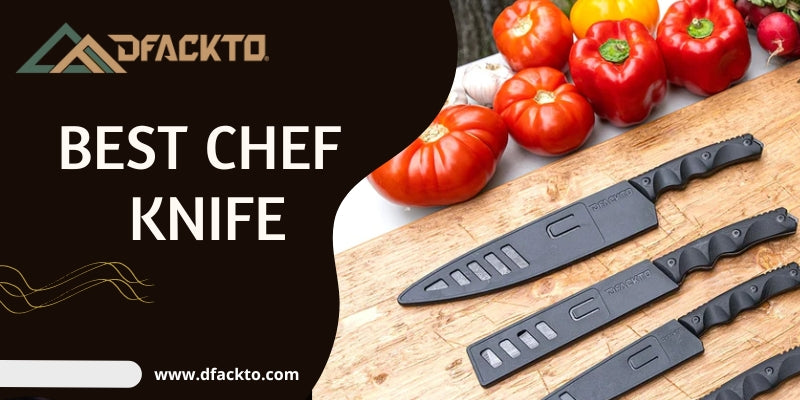Depending on the quality of our knife, our time in the kitchen might be either enjoyable or frustrating. If it's excellent, it'll make us feel competent and accomplished even if we're only julienning a carrot. If it's not good, we'll lament that our once-perfect tomato is now a mess of mushy, distorted.
How often should a knife be sharpened, and how can you tell if it is? Assuming the mangled tomato isn't a strong enough clue, here is the definitive guide on knife sharpening. Depending on how frequently you use your knives, sharpening frequency might range from once every two weeks to once every time you use them. The chef knife set you use most often should be sharpened regularly, but occasional usage knives may wait.
Honing vs. sharpening: a comparison of the two processes
Sharpening and honing are the two separate but related operations involved in the maintenance of knives. Honing restores the straightness of the blade's edge, allowing it to perform at its maximum potential once again. You only need sharpening steel and some time to do this task independently.
In contrast, sharpening is a procedure that involves grinding and shaving off small portions of the blade to generate a razor-sharp new edge. A manual knife sharpening or an electric knife sharpener may be used to accomplish this task. And you don't have to do it nearly as often as sharpening – only a couple of times per year, or after about every 300 uses, especially when you have the best chef knife.
However, once you have sharpened your tool, you should always utilize the honing steel. Because sharpening takes materials from the blade and honing is used to polish the edge that has been freshly sharpened, the two processes should always be performed in the sequence described above.
How often must a knife be sharpened?
You may take three different approaches to give your knife a sharper edge.
- Depending on how often it's used every one to two months, the typical knife has to have its edge sharpened. A broken or dulled edge may be restored by a procedure called sharpening, which requires a reasonably coarse abrasive, such as a stone or diamond plate. As you go along, your goal should be to remove damage-causing material and restore your knife's edge.
- If you want the edge of your blade to be as sharp as a razor, you should hone it every day. This step is entirely voluntary. Edge sharpening via stropping. Some people find that using a knife with a "toothy" edge is more successful than one with a polished edge while cutting zip ties.
- Maintain your knife's edge by honing it once a week. The process of honing a knife somehow doesn't remove a lot of material, but it does a fantastic job of straightening the edge and removing any rolls in the blade. If done regularly, honing will reduce the number of times you need to sharpen your tools.
Will the Process of Sharpening My Knife Blade Wear It Down Over Time?
The process of sharpening a knife includes removing metal from the blade. On the other hand, this metal is only extracted once or twice every calendar year. So, if you sharpen your knife when required, it won't be worn down to the point where it's useless. Also, because the sharpening stones only remove a little portion of the metal at a time, you won't notice the wear and tear on your knife unless you sharpen it too often. In addition to sharpening your knife once a year, another excellent rule of thumb is to sharpen it after every 300 times you use it.
Honing your knife in between sharpening extends the blade's life and ensures that it is safe to use in the time between sharpening. However, if you do not feel confident in honing your knife throughout each sharpening, it may be in your best interest to seek the guidance and assistance of a trained specialist.
Advice on how to maintain the sharpness of your knife
Maintaining a sharp best chef knife is essential whether you have a curated set of cutlery or a drawer full of get the job done blades. A knife that is not sharpened correctly poses a risk to the user, and honing a blade may be time-consuming. On the other hand, keeping your blade in excellent condition may be accomplished by following these pointers.
- Take care to choose the backdrops on which you will cut carefully. Glass, stone, and metal should not be hacked or sliced with sharp objects. These compounds harm the blade and make it more challenging to cut.
- Please wash your knives by hand. Dishwashers are fantastic, but they don't get along with knives as well as plates and silverware. Dishwasher detergent is harsh on the blade and, over time, will cause it to become duller.
- Make it a habit to sharpen your knife regularly. Because of this, the blade is bent back into position, and the knife is protected from unnecessary blunting.
- After cleaning, you should quickly dry and put away the knife. Make sure you handle your knife with extreme caution when inserting it into a magnetic knife strip or a knife block.
Conclusion
Moreover, it is not suggested to sharpen your knife at home unless you have a great deal of experience doing it. It is improbable that you will be able to remove the appropriate quantity of material from the blade while restoring a constant edge bevel. As a consequence, the edge of the knife will not be aligned correctly, and the knife will lose its sharpness very soon.
In the kitchen, knives, particularly those that are used by chefs, will inevitably get dull and damaged with time. If you sharpen and maintain your knives according to these guidelines, however, you may extend their useful life considerably. Learn more about what we can do for you by checking out https://dfackto.com/pages/tactical-chefs-knives


